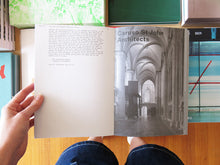
The history of architecture is often read in terms of periods that each have their own zeitgeist and movements that each have their own architectural language. What happens if we depart from this zeitgeist concept and use a cyclical history model instead? In the 1970s and 1980s, this question was usually considered from the seemingly mutually exclusive points of view of the modern, the anti-modern and the postmodern positions. Over the past two decades, contemporary European architecture developed a different frame of reference, one in which the horizon is no longer provided by the architecture of the modern movement. OASE 109 traces how, against the background of this broadening frame of reference, a different understanding of modernity emerged.
128 pages, 17 x 24 cm, softcover, Nai010 (Rotterdam).












